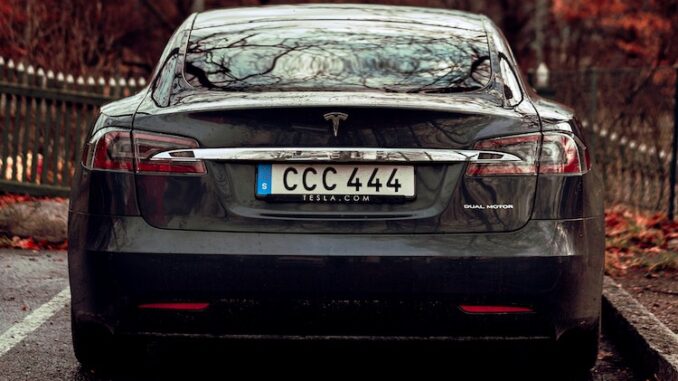
From reducing queues at drive-throughs to improving campus security, LPR technology is making a worldwide impact, writes Milestone Systems’ Jordan Cullis.
Licence Plate Recognition (LPR) technology uses cameras and software to read vehicle plates, automating processes like traffic management, law enforcement, and parking access, making it essential for efficient urban mobility and security in various sectors.
LPR technology is a widely adopted solution for automatic vehicle identification across a variety of public and private sectors. This system uses optical character recognition (OCR) to read and interpret vehicle registration plates from images or video footage captured by cameras, providing valuable insights and automating several processes.
The technology has been adopted by corporate retail chains, commercial car parks, local councils and more. The detection of license plate data has a diverse range of useful applications.
Read it in the magazine…
Key Applications of Licence Plate Recognition
Traffic Management: LPR assists in monitoring vehicle flow, detecting traffic violations, and managing congestion by automating toll collection or lane prioritisation. It also helps facilitate faster response times for emergency vehicles by identifying them in traffic.
Law Enforcement: Police departments use LPR systems to track stolen vehicles, identify suspects, and flag vehicles with outstanding violations. These systems enable real-time monitoring and historical tracking of vehicle movements, which helps law enforcement build evidence for criminal cases.
Parking Management and Access Control: LPR systems have transformed parking management, making it easier for vehicles to enter and exit paid parking lots without needing a physical ticket. This has become a common feature in schools, office buildings, residential areas, and critical infrastructure where vehicle access control is crucial. By identifying licence plates, systems can automatically grant or deny access based on preset permissions.
“From reducing queues at drive-throughs to improving campus security, LPR technology is making a worldwide impact. Any business or organisation that is building for a more efficient future should be excited by its potential.”
How LPR Systems Work
LPR technology functions by using cameras that capture vehicle licence plates and software that decodes the images into readable plate numbers. Once the plate number is recognised, the system matches it against predefined databases or rules.
These databases may consist of trusted vehicles (e.g., employees or authorised visitors), flagged vehicles (e.g., suspects or violators), or other customisable categories.
Technical Requirements for LPR Systems
LPR systems are flexible in terms of camera hardware, but effective performance depends on factors such as:
- Camera quality and placement: Cameras must be correctly calibrated for optimal results, including positioning for multi-lane detection if necessary.
- Server capacity: LPR systems need adequate server resources based on the number of cameras and the scale of the project. Larger systems with many LPR-enabled cameras may require dedicated servers.
Integration and Features of LPR Systems
LPR systems can integrate with existing video management software (VMS) or other security systems. Users can search video records by plate number, country of origin, or vehicle characteristics.
Advanced features may include wildcard searches (allowing partial matches for plates with missing or obscured characters), vehicle make and model identification, and real-time updates of vehicle lists.
Match Lists, Country Modules, and Style Aliases
- Match Lists: These are predefined lists of plate numbers, enabling systems to automatically trigger actions like opening gates for authorised vehicles or raising alarms for unauthorised ones.
- Country Modules: These allow the system to recognise plates from various regions, especially useful in border areas where vehicles from multiple countries pass through.
- Style Aliases: Grouping licence plate variations under common names, such as assigning special rules for emergency vehicles.
Benefits of LPR Systems
LPR technology streamlines many aspects of traffic and parking management, law enforcement, and facility security. It promotes easy access for employees and customers in many cases, which enhances their experience with either a place of work or a commercial shopping centre. It also provides both real-time and historical data on vehicle movements, enhancing efficiency, security, and response times.
With flexible integration into existing security infrastructure, LPR offers a wide range of possibilities for improving urban mobility, law enforcement effectiveness, and access control across multiple sectors.
LPR: solving challenges globally
For drivers, businesses and more, LPR video technology can make a big difference in people’s lives. It can help stop accidents before they happen, smooth out the friction in everyday processes and help businesses create better experiences. Users can compare recognised number plates with pre-defined lists and initiate automated actions.
From reducing queues at drive-throughs to improving campus security, LPR technology is making a worldwide impact. Any business or organisation that is building for a more efficient future should be excited by its potential.
Using the technology in conjunction with a real-time analysis tool, operators can rapidly pinpoint vehicles of interest and respond quickly. Acting at speed in this way can help prevent the kind of accidents that might slow down or endanger our driver on their journey.
It can also help when gathering evidence for prosecution. Using the reporting functionality in LPR systems, forensic investigators can track the movements of a particular vehicle within a specified timeframe, including video thumbnails of the vehicle and license plate, as well as details about the detection time.






